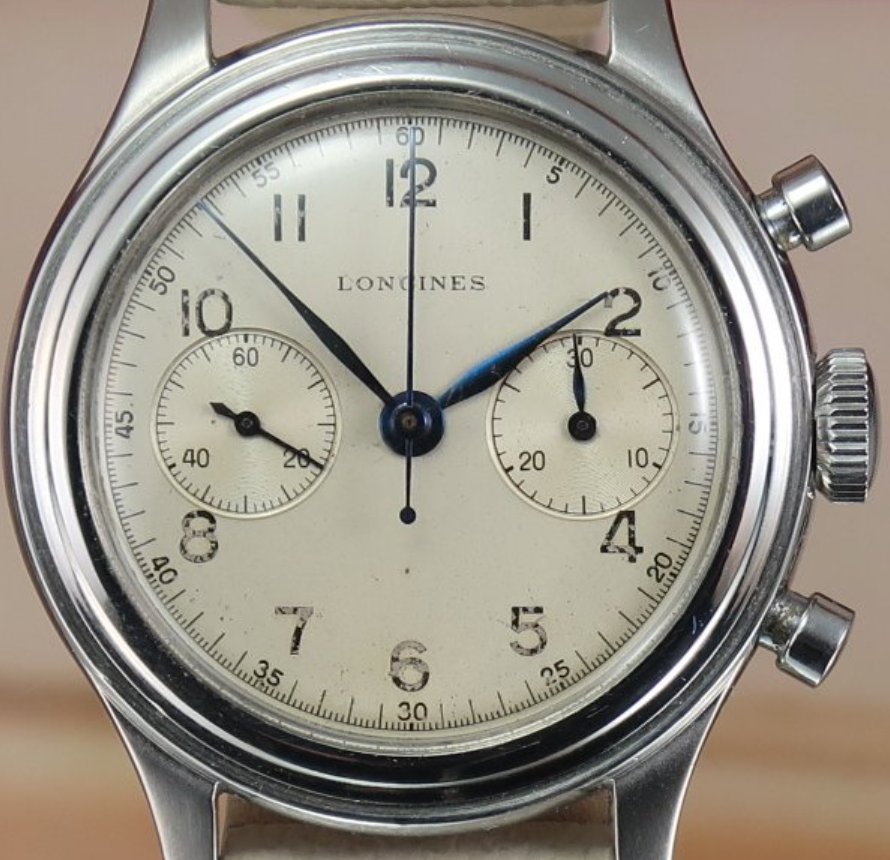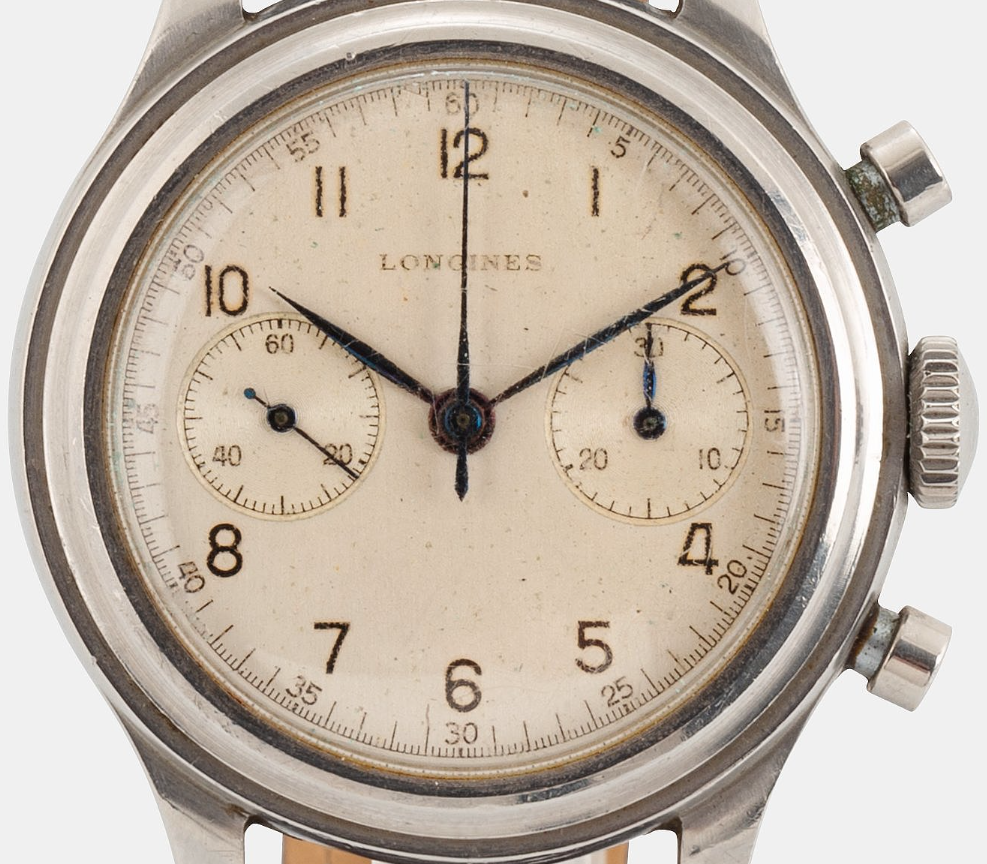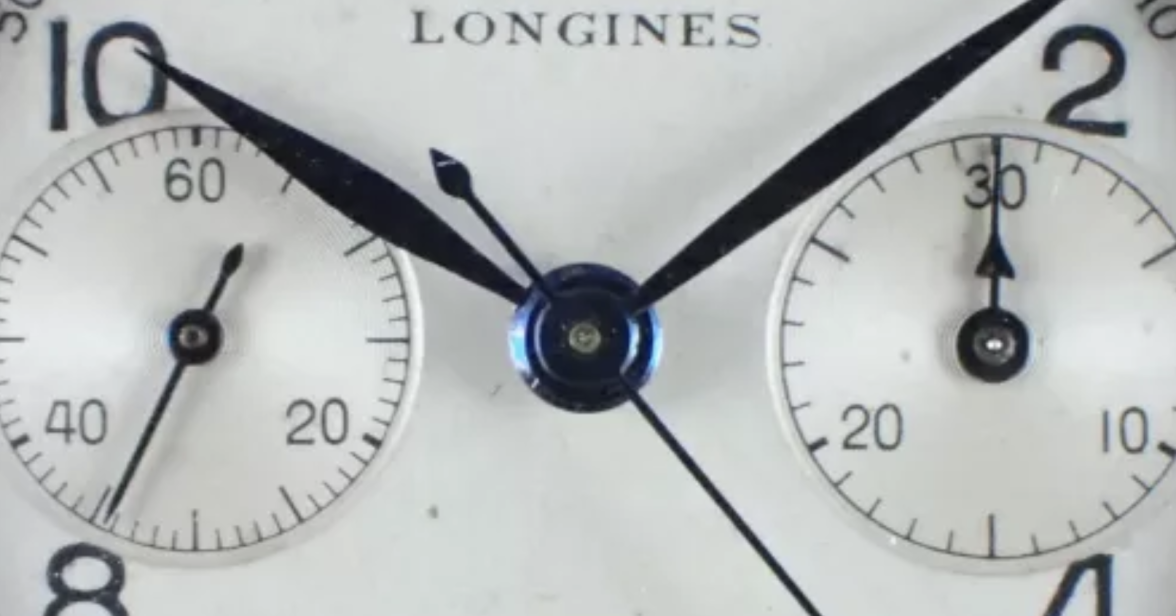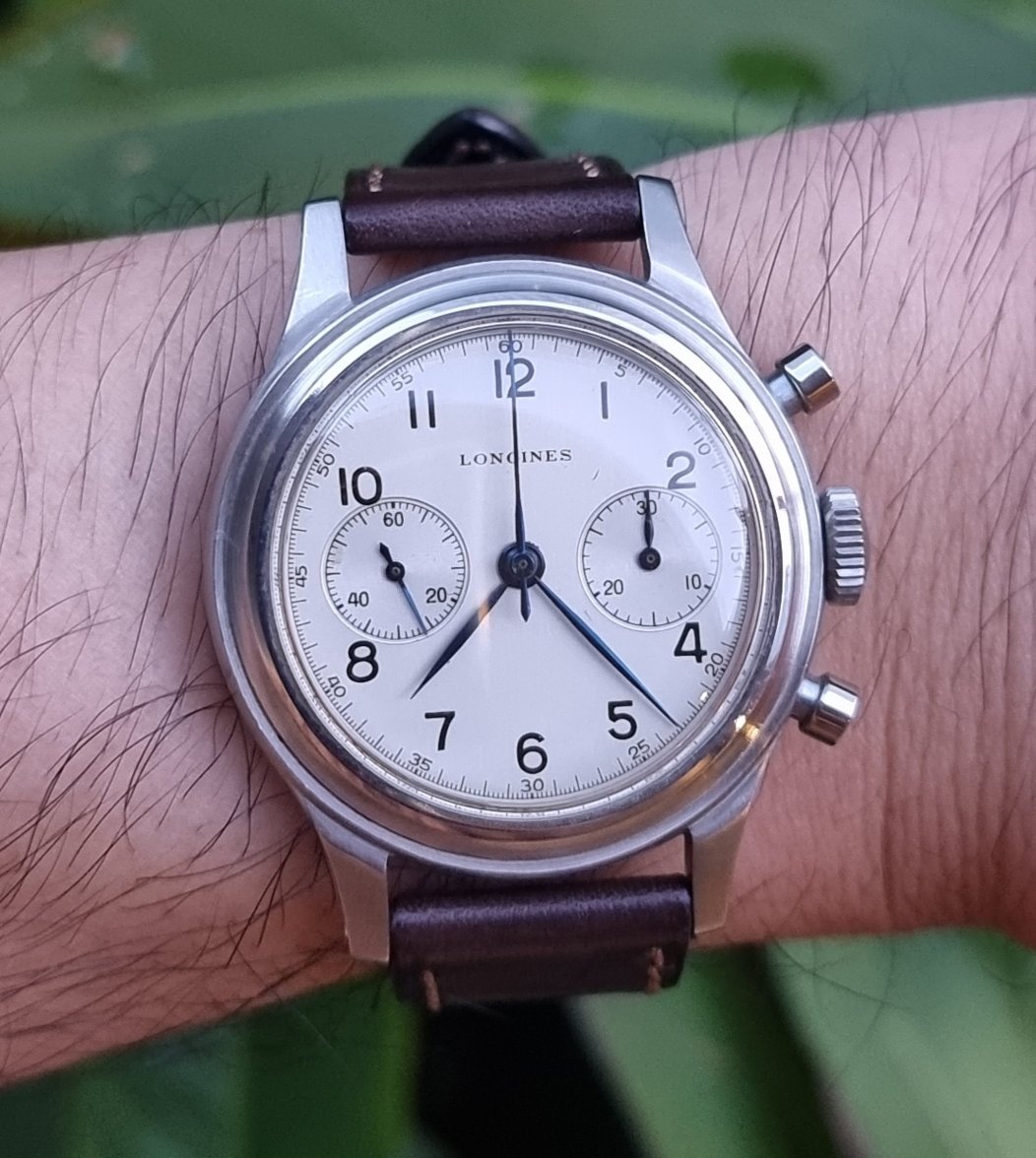DirtyDozen12
··Thanks, mystery donor!I was recently looking at examples of ref. 5415, and noticed that there is some variation in the 'basic' dials. By 'basic', I mean dials without radium or tachymeter/telemeter scales. This style of dial is common in ref. 5415.
The first major difference I noticed is the hour markers. The first two examples below have what I will call 'wide' numerals. The third example has 'narrow' numerals. This is particularly evident when viewing the zero of the "10" marker.
The second major difference is the outer scale. The first example has more rounded 3s and 5s, and 'larger' 4s. The second and third examples have 'flatter' 3s and 5s, and 'smaller' 4s.
So far, I have observed three distinct variants: (1) wide 10 marker with small 4s, (2) wide 10 marker with large 4s, and (3) narrow 10 marker with large 4s.
Type 1
Source: https://www.carsandwatches.com/watches/rare-longines-13zn-doppio-linguetta
Type 2
Source: https://curious-curio.jp/watch/36519
Type 3
Source: https://www.bukowskis.com/en/auctions/630/44-longines-flyback-chronograph
The first major difference I noticed is the hour markers. The first two examples below have what I will call 'wide' numerals. The third example has 'narrow' numerals. This is particularly evident when viewing the zero of the "10" marker.
The second major difference is the outer scale. The first example has more rounded 3s and 5s, and 'larger' 4s. The second and third examples have 'flatter' 3s and 5s, and 'smaller' 4s.
So far, I have observed three distinct variants: (1) wide 10 marker with small 4s, (2) wide 10 marker with large 4s, and (3) narrow 10 marker with large 4s.
Type 1
Source: https://www.carsandwatches.com/watches/rare-longines-13zn-doppio-linguetta
Type 2
Source: https://curious-curio.jp/watch/36519
Type 3
Source: https://www.bukowskis.com/en/auctions/630/44-longines-flyback-chronograph





